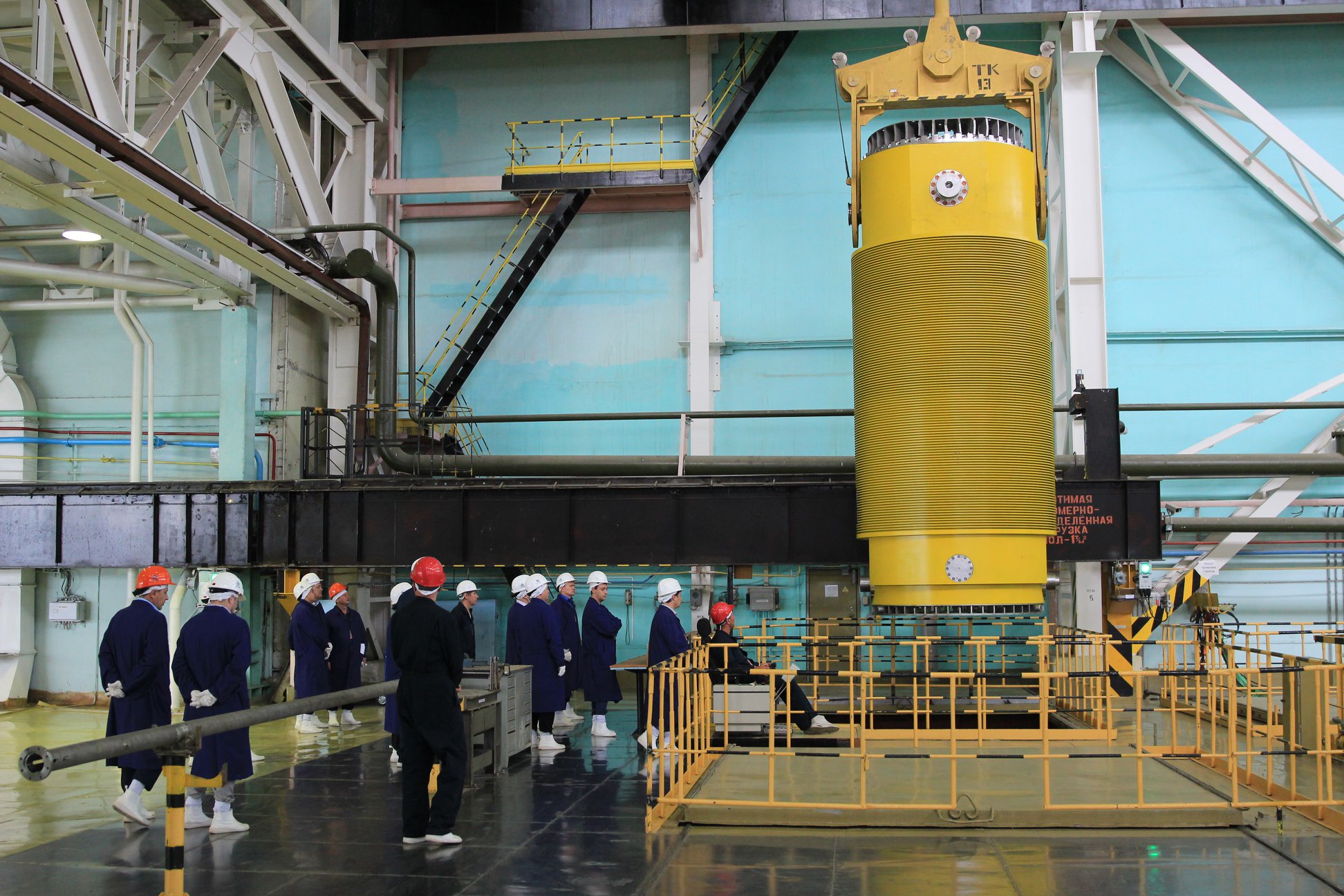
Plant inside the Mountain
back to contentsThe history of MCP dates back to 26 February 1950.
Settling down
The primary goal of the plant was fabrication of plutonium for nuclear weapons. Considering international tensions the site for the plant had to be as safe as possible. “The site on the bank of the Yenisei River in 50 km away from Krasnoyarsk is believed to be the most practicable. Compared to the other sites under consideration, it is the most distant from potential air bases of the enemy and allows for the construction of the plant’s core facilities deep under the rock, with the distance from the roofs of the highest buildings to the surface being 200–230 meters. Water from the Yenisei is sufficient to meet the needs of the plant,” reads the cover letter submitted together with the project documents.
The construction was a challenging endeavor in terms of technology. A side-hill cut was made along the Yenisei’s right bank to accommodate railway and car roads. Rock taken out of the mines was used to build the roads.
Since the plant was located inside a mountain, it needed a complex ventilation system capable of supplying several millions of cubic meters of air per hour. In winter, the air supplied was pre-heated by special heaters installed inside the intake channels.
To protect the core facilities against shockwaves, expansion chambers were built in transportation and ventilation tunnels, followed by strong protective devices made of steel.
Functional transformations
Three plutonium breeder reactors had long been the ‘core’ of the plant. The reactor code-named AD was commissioned in 1958, ADE-1 in 1961, and ADE-2 in 1964. The first two reactors were shut down in 1992 after the collapse of the Soviet Unit and termination of defense contracts. ADE-2 remained in operation until April 2010 as it supplied heat and electricity to the neighboring town of Zheleznogorsk.
After the reactors were shut down, MCP has concentrated on providing spent nuclear fuel storage and transportation services. It also processes spent fuel without creating liquid waste. Isotope Chemical Factory, a subsidiary of MCP, manufactured nuclear casks, flasks, ampoules and other equipment for spent nuclear fuel management and provided transportation and storage services for RBMK-1000 and VVER-1000 spent fuel. The factory operates wet and dry storage facilities.

Over the last fifteen years, MCP has been focusing its efforts on ‘closing’ the nuclear fuel cycle and fuel recycling. For this purpose, another subsidiary of MCP, Radiochemical Factory, has begun fabricating mixed oxide nuclear fuel (MOX fuel, a mixture of uranium and plutonium oxides) for fast neutron reactors, from pellets to assemblies. The factory’s capacity is 400 fuel assemblies per year.
In August 2019, the first 18 fuel assemblies containing MOX fuel were loaded into the BN-800 reactor of the Beloyarsk Nuclear Power Plant. 180 more assemblies will be loaded in 2020. In 2021, all the assemblies in the reactor core will be replaced with MOX fuel.
The mixed oxide fuel allows for the use of depleted uranium in the fuel for nuclear reactors. Depleted uranium contains mostly U-238, which turns into plutonium in the fast reactor. What is more, the fabrication of MOX fuel allows for repeated use of irradiated fuel, burning it up and reducing the amount of nuclear materials in circulation 100-fold.
Also for the purpose of closing the nuclear fuel cycle, MCP has established a pilot center for the spent nuclear fuel (SNF) management. The first phase of the Pilot SNF Management Center was launched in 2015. The second phase is planned to be launched in 2020.

The Center operates several test chambers to develop a procedure for reprocessing any kind of spent nuclear fuel with a capacity of 5 tons of SNF per annum and an end-to-end reprocessing line for spent nuclear fuel from VVER-1000 reactors with a capacity of 400 tons per annum. Fuel assemblies are first crushed; then cladding and structural materials are separated from fuel and processed separately.
The resulting materials are powdered triuranium octoxide, a mixture of uranium, plutonium and actinide oxides, and solidified fission products. Powdered uranium and plutonium oxides will be used to fabricate MOX fuel, while fission products will be conditioned until safe, compacted and placed for long-term controlled storage.
The Pilot SNF Management Center will be supplemented with a molten salt research reactor that will be used to burn up minor actinides, toxic highly radioactive elements contained in spent nuclear fuel. The decision to build this reactor was made in November 2019; its design is now being finalized.
Photo:
Mining and Chemical Plant bird’s-eye view
Trials of a new transport and packaging set for spent nuclear fuel of the VVER-1000 and VVER-1200 reactors
Visit of Alexey Likhachev to the Mining and Chemical Plant




